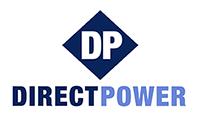What are Reactive Power charges?
All Suppliers and ultimately customers are subject to Reactive Power charges, which are applied by the Distribution Network Operators and passed through to the end consumer where appropriate. It is impossible to know advance if Reactive Power charges will occur as it depends on how a site uses electricity. A quick review of historical bills is a good indication if these charges are something for you to worry about or not. That being said, it is normal for Reactive Power charges to be passed through on a customer’s bill when appropriate, you are not being singled out if you see these charges on your bills.
Case by case, each client has to assess whether Reactive Power charges are great enough to warrant spending time and money investing in equipment or changing operating routines to minimise future Reactive Power charges. Get in touch with Direct Power for more insight.
To get a little more technical:
Reactive power refers to the difference between the electricity supplied and the electricity converted into useful power (i.e. that which you are able to use). If a site has high Reactive Power i.e. if there is a large amount of power being wasted, more current needs to flow to provide the same output. This puts an additional strain on the distribution network, potentially increasing costs for the Distribution Network Operator. This charge is a contribution towards those costs as shown on your bills.
To encourage customers to improve their power factor all Distribution Network Operators’ (DNO) will apply Reactive Power Charges, if the customer’s average power factor over the billing month is below a certain level (normally below 0.95). Reactive Power Charges in combination with Agreed Supply Capacity Charges are aimed at encouraging the customer to improve their power factor and reduce the current Demand at their site.
- It is worth understanding that different equipment will have differing effects on a site’s electricity supply. We can broadly split the equipment used on sites into three categories as follows;
- Inductive loads – these are loads that need to create an electromagnetic field to operate and are said to cause a lagging power factor (current lags voltage) .
- Resistive loads – these are loads that have no effect on the power factor at site (unity power factor). Examples of this equipment are tungsten light bulbs, electric heating elements etc.
- Capacitive loads – these loads will cause a leading power factor (current leads voltage) These loads are the opposite of inductive loads.
How to correct lagging power factors:
- A lagging power factor at a site is normally corrected by the installation of power factor correction equipment. This equipment contains capacitors which create the opposite effect of the inductive load and reduces the lagging effect (current lags voltage) caused by the inductive load at the site.
- Unless the correction equipment required is very small in electrical size the power factor correction equipment will be automatic. This means that as the inductive load at the site increases more capacitors are brought on line and as the inductive load reduces the capacitors are taken off line.
- Power Factor Correction companies will normally offer a free survey and quote to customers. Normally the site survey involves checking what the current power factor is at site, what equipment is used on site and determining the best way to correct the power factor.
- If the average power factor is corrected to a level above the charging threshold (normally above 0.95) the Reactive Power Charges will stop.
- Improving the average power factor will reduce the kVA Maximum Demand.
- Reducing the Demand will free up Electrical Capacity at the site.
- The customers cables, switchgear, transformers and equipment will carry less current.
Typical examples of things that can cause Lagging Power:
- a.c. induction motors
- Induction heating
- Transformers
- High Intensity Discharge (HID) lighting
Therefore, depending on how much you are spending on reactive charges, it is wise to discuss the above with your site’s electrician and Direct Power. Hopefully the electrician can advise of low cost changes you can make to improve the power factor, and therefore reduce the likelihood of Reactive Power charges.
Get in touch today for friendly advice on Reactive Power charges at your site.

